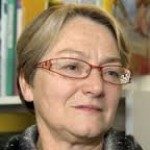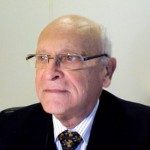Link to Pubmed [PMID] – 7893712
Biochemistry 1995 Mar;34(9):2998-3008
Recent studies on protein folding intermediates by pulsed amide proton exchange and by far-ultraviolet circular dichroism have shown important discrepancies between the secondary structure contents estimated by these two methods at early folding stages. To solve these apparent discrepancies, structural studies have been performed on the isolated, 101 residue long, C-terminal proteolytic domain (F2) of the Escherichia coli tryptophan synthase beta chain, which had previously been reported to behave as an early folding intermediate [Chaffotte, A. F., Cadieux, C., Guillou, Y., & Goldberg, M. E. (1992) Biochemistry 31, 4303-4308]. The secondary structure of F2 has been investigated by far-UV circular dichroism (CD), Fourier transform infrared (FTIR) spectroscopy, and NMR. The CD and FTIR spectra clearly indicate that isolated F2 has about 30-45% of its residues involved in secondary structures stabilized by conventional hydrogen bonds. The characteristics of the NMR spectrum (line broadening, absence of structure-induced chemical shifts, absence of nuclear Overhauser effects in the amide region, few dipolar interactions between the side-chain protons) suggest that isolated F2 is oscillating between several conformations in rapid equilibrium. The rate of amide proton exchange has been studied by one-dimensional NMR, which indicates a significant extent of proton protection, with, however, protection factors that can be estimated to be at most 60 and more probably closer to 10. Thus, F2 appears to exist as a molten globule that exhibits very low amide proton protection and yet contains a large fraction of its residues involved in authentic secondary structures stabilized by hydrogen bonds. Such a state is likely to correspond to the earliest structured folding intermediates thus far characterized.



